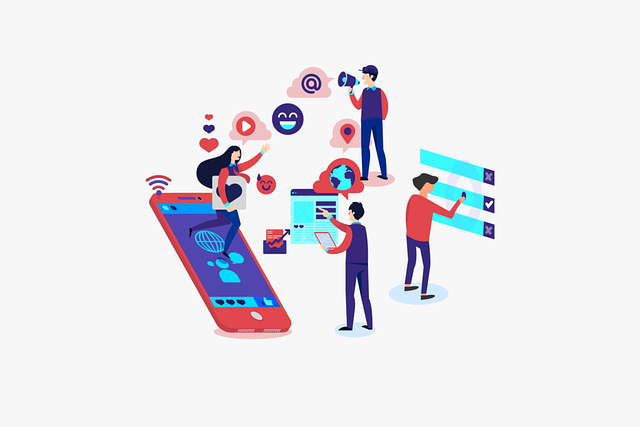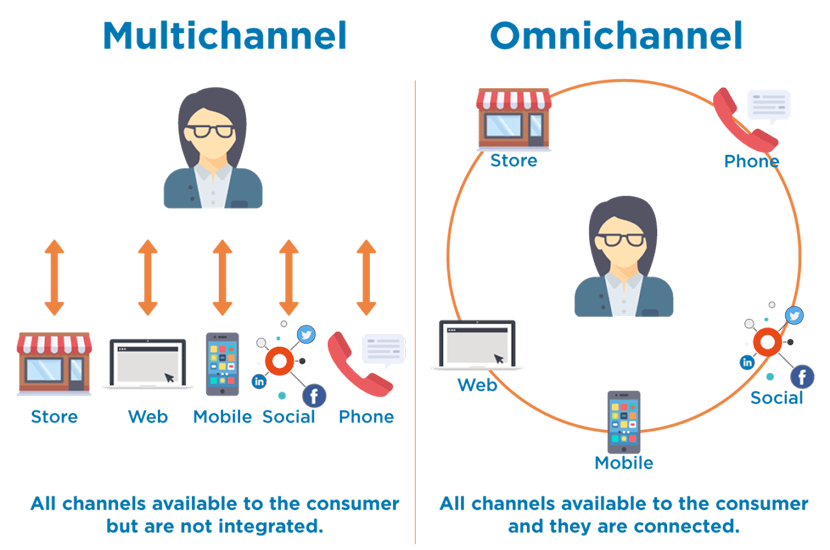Explaining The Difference: Omnichannel vs. Multichannel Marketing

As your brand grows, your marketing strategy needs to grow with it. What worked when you were just getting started might not hold up as your audience gets bigger and your message spreads across more platforms.
At some point, you’ll need to decide how to manage your channels. Do you treat each one as its own space with separate goals and content? Or do you build a connected system where every platform works together to support the same customer journey?
That’s the difference between multichannel and omnichannel marketing. Both approaches use more than one channel to reach people, but the way those channels operate is completely different. One focuses on reach and independence. The other is about creating a smooth, connected experience across touchpoints.
In this article, we’ll break down what each strategy involves, where they work best, and how to figure out which one fits your brand.

What Is a Marketing Channel?
Before jumping into the comparison, let’s clarify what we mean by channel.
A marketing channel is any way a brand communicates with its audience. It can be one-way, like a billboard, or two-way, like live chat. Some are digital. Others are physical. All of them serve the same purpose: to connect a business with its customers.
Examples of marketing channels include:
- Social media platforms
- Company websites and blogs
- SMS and email
- Phone calls
- Print materials like brochures or flyers
- In-store displays or signage
Different channels are better suited to different audiences. For example, print newspapers still have strong reach among people over 65. If your brand targets that group, investing in print might be more effective than focusing only on digital.
What Is Multichannel Marketing?
Multichannel marketing means you’re reaching people through more than one platform, but each one is run separately. Every channel has its own strategy, goals, and content.
Picture a brand that runs Facebook ads, sends out email campaigns, and appears in local print magazines. Each one might promote a similar product, but the message and timing are different. The teams managing those efforts aren’t necessarily coordinating with each other.
This approach is common because it’s simple to get started. You can focus on making each channel work well without needing to link everything behind the scenes.
One downside is that the customer experience might feel disconnected. Someone could see a sale on social media, then visit the website and not find the same offer there.
What Is Omnichannel Marketing?
Omnichannel marketing uses multiple platforms too, but everything is connected. Instead of working in isolation, your channels share information and support the same customer journey.
With this approach, customers experience a smooth transition from one touchpoint to the next. They might browse a product on your website, then later see a social media ad for the same item. After clicking the ad, they can sign up for your email list and receive a welcome message that mentions the product they viewed.
It’s not just about promoting products. Omnichannel is also helpful for customer service. A person might start a conversation by email, then move to live chat, and later receive a follow-up call. Each touchpoint picks up right where the last one left off, without needing to repeat anything.
This works best when your tools and teams are connected. Everyone involved should be able to access customer information and updates, no matter which platform the customer used first.

What is the Difference Between Omnichannel and Multichannel Marketing: A Breakdown
To better understand the difference between multichannel and omnichannel marketing, let’s break it down by the main aspects that shape each approach.
Main Focus
In a multichannel strategy, the focus is on the performance of each individual platform. Each channel has its own set of goals, metrics, and campaigns. Teams often look at what works best for their specific channel without necessarily thinking about how it fits into the bigger picture.
Omnichannel marketing shifts the focus to the customer’s overall journey. Instead of looking at channels in isolation, it considers how a person moves between platforms and how to create a smooth, consistent experience from start to finish.
Channel Setup
Multichannel setups usually involve separate teams or workflows for each platform. Social media, email, website content, and customer service might all be managed independently. This makes it easier to work quickly but harder to maintain consistency.
With an omnichannel approach, channels are connected and coordinated. Messaging, timing, and user data are aligned across platforms. It requires more collaboration between teams but results in a more unified experience.
Customer Experience
A multichannel customer experience can feel fragmented. Someone might see a campaign on Instagram, visit the website, and get an email later but the messaging or offers could be completely different. This can lead to confusion or a loss of momentum in the buying process.
Omnichannel marketing is designed to feel seamless. Each interaction builds on the last, whether it’s online, in-store, or through support. Customers don’t have to repeat themselves or reintroduce their interests because the brand already has that context.
Content Strategy
In multichannel marketing, content is typically tailored to each platform. The messaging and visuals on social media might look completely different from what appears in your email campaign. That can be helpful for testing what works best on each channel but can also lead to inconsistency.
Omnichannel marketing takes a more unified approach. The tone, messaging, and timing are consistent across platforms, reinforcing the same message and supporting a cohesive brand experience.
Tools and Data
Multichannel strategies often involve different tools for different teams. Data is usually stored separately, which can make it harder to track user behavior across multiple platforms.
Omnichannel marketing depends on shared systems and integrated tools. This allows brands to track interactions across channels and use those insights to personalize future communications. It also gives teams access to the same customer information, which helps keep the experience consistent.

Pros and Cons of Multichannel Marketing
Multichannel marketing can be:
Helpful for:
- Brands getting started with digital campaigns
- Businesses with separate marketing teams
- Companies that focus more on reach than on customer journey
Challenging when:
- Customers expect a consistent experience across platforms
- Teams aren’t aligned, causing confusion between messages
- You need to keep track of multiple campaigns without overlap
This setup gives channel managers freedom to focus on their own tasks without needing to coordinate constantly. But without alignment, the brand experience can feel disjointed.
Pros and Cons of Omnichannel Marketing
Omnichannel marketing can be:
Helpful for:
- Brands focused on long-term customer relationships
- Businesses that want to create a seamless user experience
- Teams using tools that allow for integration and shared data
Challenging when:
- Budgets are limited
- Internal systems don’t communicate with each other
- Teams aren’t used to working across channels
This approach usually involves fewer channels, but they work together. It may require a shift in how your marketing team works. Everyone needs access to the same information to keep communication consistent.
How to Decide Which Strategy to Use
To figure out which method fits your brand, consider the following:
- What kind of budget are you working with?
- How much internal coordination is possible right now?
- How important is it that customers have the same experience across platforms?
- What tools do you already use to manage campaigns and communication?
- Does your audience expect a connected journey, or are they used to different touchpoints?
Multichannel marketing can help you reach more people quickly, especially when you’re still building your brand. Omnichannel takes more coordination, but the experience can feel more polished and customer-focused.
Both methods can be effective. What matters is choosing the one that fits where your brand is now and where you want to go next.
Omnichannel vs. Multichannel Marketing Final Thoughts
Multichannel and omnichannel marketing both rely on using multiple platforms to promote your brand. The difference lies in how those platforms work together.
If your team is ready to build a consistent experience that connects every part of the customer journey, omnichannel marketing might be the next step. If you’re working with a lean team and want to grow your reach channel by channel, multichannel can still be a smart approach.
Whichever route you choose, Metricool can help you manage your content and measure performance across platforms. From social media planning to analytics, everything you need is in one place.

